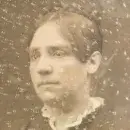
Margaretta Hare Morris
Margaretta Hare Morris was an entomologist known for her groundbreaking work involving studies of the Hessian fly, cicadas, cotton moths, and bed bugs. Her work later proved crucial to finding methods to prevent invasive species from destroying crops as well as for pesticides research.
Born in Philadelphia, there is no evidence that she had a formal scientific education. She conducted her own home research, which included growing and observing insects that were considered to be invasive, such as the Hessian fly (Cecidomyia destructor) that had been destroying wheat crops for decades. Morris’s research found that Hessian flies laid their eggs in wheat grain. In a paper published in the Transactions of the American Philosophical Society, she proposed that the solution to the problem was to obtain and plant uninfested seeds.
She also gained fame for her research on seventeen-year cicadas, which proved that there were two species and that the larvae were feeding on tree roots, allowing them to persist underground before emerging but also weakening the trees. In 1855, she showed that water beetles can transport fish eggs from pond to pond. In 1850, Morris and astronomer Maria Mitchell were the first women elected to the American Association for the Advancement of Science. Morris was also elected to the Academy of Natural Sciences of Philadelphia in 1859.